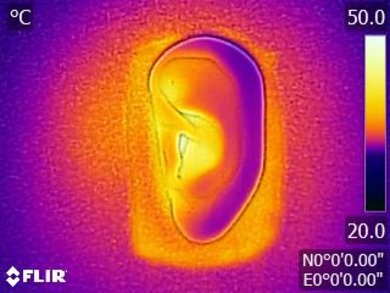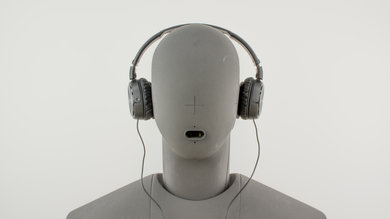The Sony MDR-ZX110NC are mediocre mixed usage headphones that have decent audio reproduction and don't leak much. Unfortunately, they feel cheaply made and poorly isolate listeners from ambient noise. They don't fare well in loud, noisy environments and also have no control options when connected to your phone which is disappointing
Our Verdict
The Sony MDR-ZX110NC deliver a decent sound but a mediocre mixed usage experience. They feel cheaply built and poorly isolate listeners from ambient noise. They're a low budget pair for casual listening or recording thanks to their low leakage but lack too many features to be versatile enough for all use cases.
-
Decent audio reproduction.
-
Minimal leakage.
-
Flimsy build.
-
Poor noise isolation.
-
Unstable fit; easily falls off your head.
-
Bass delivery varies significantly across users. Sensitive to glasses.
The Sony MDR-ZX110NC have decent sound quality for neutral listening. Instruments and vocals are not drowned out, even if they lack a bit of clarity, and the bass packs an adequate amount of punch. However, they have a poor soundstage and lack the detail that good neutral listening headphones provide.
Not ideal for commuting. The small ear cups don't efficiently prevent ambient noise from entering your audio.
Subpar for sports. They're lightweight and relatively portable but too unstable to use while jogging. They also don't have a decent control scheme, and the non-detachable cable could bothersome during strenuous exercise.
Below-average for office use. The Sony MDR-ZX110NC won't block the ambient chatter of a lively office from seeping into your audio. On the upside, they don't leak much.
Sub-par for gaming. These headphones do not have a mic or any app support. They're also limited by the range of their relatively short audio cable. On the upside, since they're wired, they have very low latency although they are not the ideal choice for gaming due to their lack of features.
- 5.5 Mixed Usage
- 6.4 Neutral Sound
- 5.4 Commute/Travel
- 5.4 Sports/Fitness
- 5.7 Office
- 4.1 Wireless Gaming
- 5.6 Wired Gaming
- 1.9 Phone Call
Changelog
- Updated Nov 21, 2019: Converted to Test Bench 1.3.1.
- Updated Nov 21, 2019: Converted to Test Bench 1.3.
- Updated Feb 16, 2018: Converted to Test Bench 1.2.
- Updated Aug 10, 2017: Converted to Test Bench 1.1.
- Updated Mar 01, 2017: Converted to Test Bench 1.0.
Check Price
Compared To Other Headphones

The Sony MDR-ZX110NC deliver a decent sound but have a lot of flaws. Their build quality is plasticky and feels cheaply made. They're not very stable and quickly fall off the head during physical activity. The active noise cancellation is weak and poorly isolate listeners from the ambient noise of loud environments. Fortunately, they don't leak much and won't disturb the people around you even at higher volumes. See our recommendations for the best noise cancelling headphones under $100, the best noise cancelling headphones under $200 and the best on-ear headphones.
Test Results
The Sony MDR-ZX110NC are decent-looking headphones but offer nothing remarkable with their style. They have a matte all-black color scheme. The ear cups have a stylized back cover that adds a little more flair to the design. These headphones won't stand out, but their understated style will work for some.
The Sony MDR-ZX110NC have a lightweight design, and the headband does not exert too much pressure on the ears. However, the lack of padding on the headband and the slightly stiff ear cups that do not swivel, make these headphones a little uncomfortable. Also, the small ear cups of the on-ear design might not be for everyone.
Button layout and functionality is disappointing. There is only one noise canceling switch, which means you will have no control over your audio.
These headphones are fairly breathable on-ears. They do not cover your ears entirely, like most over-ear designs, so they do not obstruct as much airflow. They will be breathable enough for sports but unfortunately, their poor stability is not suitable for running and exercising.
The Sony MDRZX110NC are above-average portable on-ear headphones. They conveniently fold up into a much more compact format and can easily be carried around in a bag and will fit in some larger pockets. However, they are not as small as some other on-ear models headphones and will still feel a little cumbersome for some listeners.
The build quality is below-average. The all-plastic design and thin headband looks cheap and does not feel durable. The headband might snap under moderate physical stress, and the unique hinge mechanisms are additional weak points to an already fragile design. The ear cups, on the other hand, are relatively dense, which is a plus.
These headphones do not deliver a stable fit. They will easily slip off your ears during high-intensity activities and would not be suitable for running or any kind of sports use. They don't apply enough pressure to maintain their position when you tilt your head. The audio cables are also non-detachable, which will pull the headphones off your head if they get caught on something.
The Sony MDR-ZX110NC have a poor frequency response consistency. The maximum deviation in the bass range across our five human subjects is more than 15dB at 20Hz, which is quite noticeably. These inconsistencies in bass delivery are also present throughout the rest of the bass range. In the treble range, however, the Sony is quite consistent below 10KHz.
The Sony MDRZX110NC have a good bass. LFE (low-frequency extension) is at 25Hz, which is great. Low-bass is also within 0.2dB of our target, suggesting a balanced production of thumping and rumbling sounds. However, mid-bass and high-bass are consistently overemphasized by more than 4dB. This results in a bass that is slightly too heavy and muddy. Also, their bass delivery varies significantly across users, and is sensitive to the quality of fit, seal, and whether you wear glasses. The response here represents the average bass response and your experience may vary.
The mid-range is great. The overall response throughout the range is quite flat and even, suggesting a clear and well-balanced reproduction of vocals and lead instruments. Low-mid, is slightly hyped, which could thicken vocals a bit, but the effect will be quite subtle. Mid-mid is flat and virtually flawless, but high-mid is slightly overemphasized similar to low-mid. This could make the mid-range a bit forward and intense, but again, at 1.5dB, the effect will be very subtle.
The treble performance is sub-par. The response throughout the range is even, which is good, but not quite balanced. The 10dB dip around 5KHz negatively affects the detail and brightness of sound, especially on vocals and lead instruments. Also, the peak around 10KHz could make these headphones a bit sibilant (sharp on S and Ts) which will be mostly noticeable on vocals and cymbals.
The imaging performance of the ZX110NC is decent. Weighted group delay is at 0.25, which is very good. The GD graph also shows that the entire group delay response never crosses the audibility threshold. This ensures a tight bass and a transparent treble reproduction. In terms of driver matching, our test unit was well-matched in frequency and amplitude response, but showed significant phase mismatch in the bass and mid ranges. The suggests a stereo image that is well-balanced and good for locating objects (voices, instruments, video game effects) in the stereo field, by may be a bit weak and too wide in the lower frequencies.
The Sony MDR-ZX110NC have a poor soundstage. The on-ear design of these headphones prevents them from interacting with and activating the resonances of the pinna in a way a loudspeaker would do. This can be seen in the PRTF graph, where there's little pinna activation below 5KHz, and the interaction above that has little accuracy. There's not a notch present around the 10KHz area either. This suggests a soundstage that is perceived as small and located inside the listener's head.
The Sony MDR-ZX110NC have a poor isolation. The ANC (active noise cancelling) system of these headphones don't seem to be doing much, and the performance is nearly identical to when the ANC is off. In the bass range, where the rumble of airplane and bus engines sits, they don't provide any isolation. In the mid-range, important for blocking out speech, they achieve 5dB of isolation which is inadequate. In the treble range, occupied by sharp S and T sounds, they reduce outside noise by 21dB, which is average.
The leakage performance is great. The significant portion of the leakage is concentrated in the treble range between 2Khz and 5KHz, which is a narrow range. The overall level of the leakage is quiet too. With the music at 100dB SPL, the leakage at 1 foot away averages at 32dB SPL and peaks at 47dB SPL, which is just below the noise floor of an average office.
The Sony MDRZX110NC do not come with a microphone. For a wired headphone with a good in-line microphone, check out the Bose SoundTrue Around-Ear II, the QuietComfort 25 or the Apple EarPods.
These headphones do not have a microphone so the recording quality has not been tested.
The Sony MDR-ZX110NC do not have a microphone so the noise handling has not been tested.
The Sony MDR-ZX110NC have very long battery life that will easily deliver a weekend's worth of continuous playback. They use an AAA battery but thanks to the long battery life you won't have to swap out the battery as often. Unfortunately, they have no power saving features, but on the upside, they can be used passively when the battery runs out.
These headphones do not come with an additional app for added customization options.
The Sony MDRZX110NC are wired headphones and do not support Bluetooth.
As these headphones are wired, there is essentially no latency when gaming or watching movies but they will not have the convenient range of wireless headphones.
There is no charging dock or base for these headphones. For a good gaming headset with a dock, check out the SteelSeries Arctis 7.
Comments
Sony MDR-ZX110NC: Main Discussion
Let us know why you want us to review the product here, or encourage others to vote for this product.



























































































